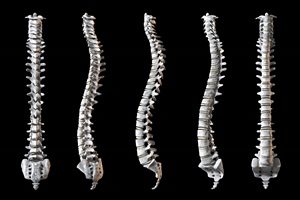Chronic Headache Linked to Anxiety, Depression
 Tension and cervicogenic headaches are clinically similar, but they are associated with varying personality traits. A recent study evaluated the personality differences between chronic headache sufferers to determine the traits most closely linked to each type of headache.
Tension and cervicogenic headaches are clinically similar, but they are associated with varying personality traits. A recent study evaluated the personality differences between chronic headache sufferers to determine the traits most closely linked to each type of headache.
The researchers administered personality questionnaires to the participants and measured their depressive trends with the Plutchik-van-Praag Depression Inventory. The study involved 26 healthy men, 18 suffering from chronic tension-type headaches, and 19 with cervicogenic headaches.
Compared with healthy participants, those with chronic tension headaches scored significantly higher for Neuroticism-Anxiety and on the PVP depression test. People with a high Neuroticism-Anxiety score are described as tense, worried, fearful, and sensitive to criticism. Meanwhile, the cervicogenic headache group scored significantly lower for Thrill and Adventure Seeking traits. This measurement of sensation-seeking represents the willingness to take risks for excitement, indicating that patients with cervicogenic headaches have less desire to engage in activities involving speed or danger.
These results indicate that higher scores for depression and neuroticism-anxiety are linked with chronic tension-type headaches, while lower sensation-seeking scores are linked with cervicogenic headaches. However, it has not yet been established whether these abnormal traits are the causes or consequences of headaches.
These findings may encourage the use of psychotherapy for patients with headaches. In addition to undergoing chiropractic treatments, managing anxiety and depression could be an important component of headache relief.
Reference
Chen W, Yu S, et al. Personality Characteristics of Male Sufferers of Chronic Tension-Type and Cervicogenic Headache. Journal of Clinical Neurology 2012; 8(1):69-74.
Shared from the following website: https://www.chironexus.net/2012/09/chronic-headache-linked-to-anexity-depression/
 We all know physical activity can do wonders for lifting the mood, but new research shows that regular exercise may actually prevent the onset of depression.
We all know physical activity can do wonders for lifting the mood, but new research shows that regular exercise may actually prevent the onset of depression. With headaches being one of the most common nervous system disorders worldwide, affecting almost 50 percent of the population at least once annually, finding a way to relieve them is important to when it comes to improving quality of life for a large number of people. Certainly there are several different types of headaches–migraines, cluster headaches, and medication-overuse headaches, for instance–and each one requires a unique approach for treatment.
With headaches being one of the most common nervous system disorders worldwide, affecting almost 50 percent of the population at least once annually, finding a way to relieve them is important to when it comes to improving quality of life for a large number of people. Certainly there are several different types of headaches–migraines, cluster headaches, and medication-overuse headaches, for instance–and each one requires a unique approach for treatment. Back pain is an expensive health problem for both patients and businesses.
Back pain is an expensive health problem for both patients and businesses.  We recently posted about standing desks. For those of you who are looking for some good information on standing desks, today we are sharing a review on some standing desks. Standing desks are a great option where they are allowed! Standing desks can be of great benefit by allowing greater circulation while you are working at your desk! Wonderful for those of us who spend a considerable amount of time sitting at a desk!
We recently posted about standing desks. For those of you who are looking for some good information on standing desks, today we are sharing a review on some standing desks. Standing desks are a great option where they are allowed! Standing desks can be of great benefit by allowing greater circulation while you are working at your desk! Wonderful for those of us who spend a considerable amount of time sitting at a desk!



